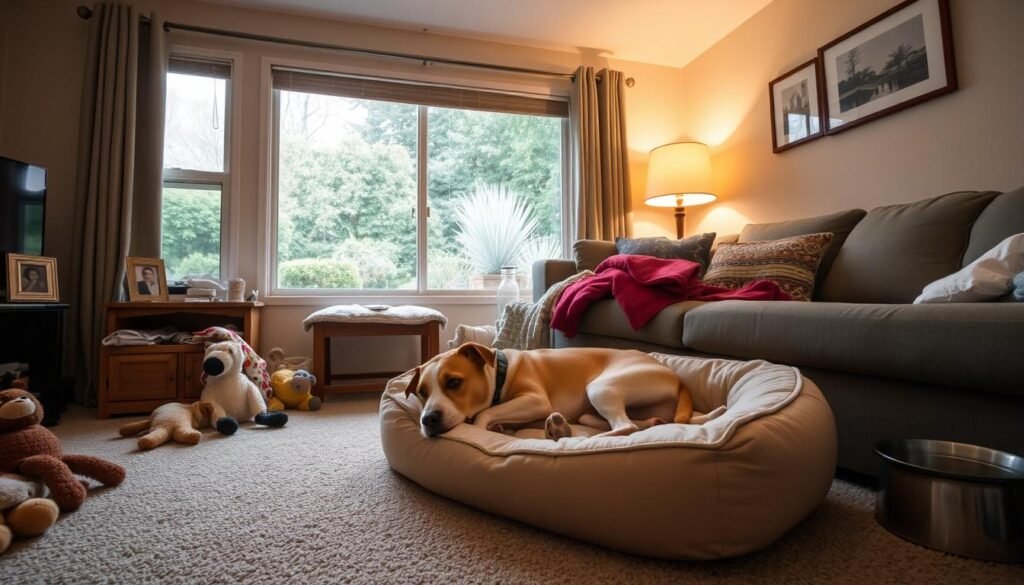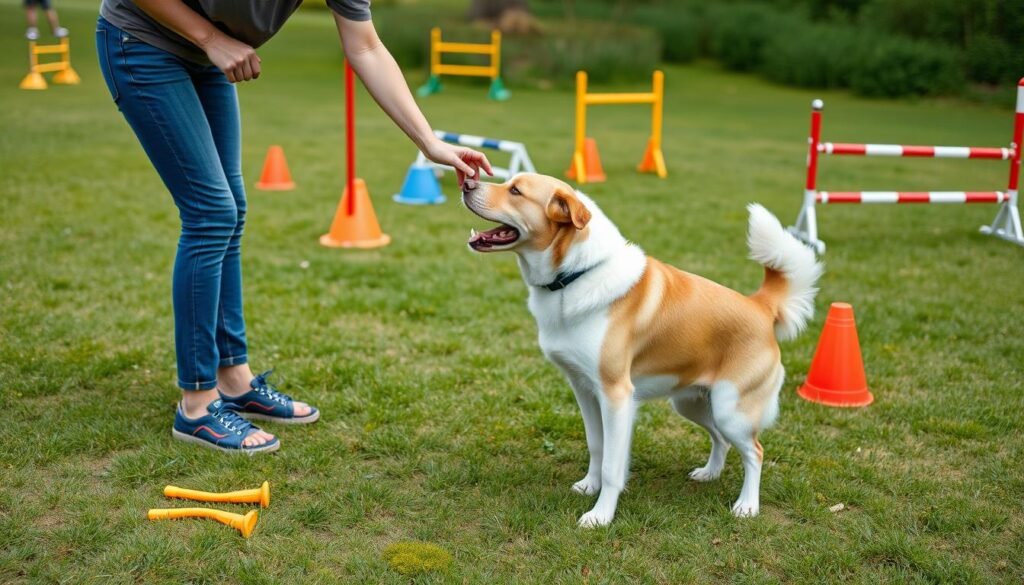How do you help your dog feel secure and comfortable after an unexpected move? Emergency relocations can be incredibly stressful for both you and your furry friend. The severe fire outbreak in Los Angeles for instance left every resident devastated, scrambling to relocate their loved ones, their pets inclusive, to safety. Understanding the challenges your dog might face and knowing how to address them can make all the difference in easing their transition.
Recognizing signs of stress in dogs is crucial, as well as maintaining a routine to provide reassurance. Recent studies highlight that dogs, much like humans, show elevated stress responses post-relocation. Expert veterinarians and experienced dog trainers emphasize the importance of consistency in training and care to achieve effective post-emergency dog care, dog behavior adjustment, and stress relief for relocated dogs.
Calming practices, such as providing a safe space and maintaining familiar routines, can significantly aid in your dog’s adjustment. Enlisting the help of professional advice ensures that you are well-equipped to support your pet through this challenging time.
Key Takeaways
- Recognize signs of stress in your dog post-relocation.
- Maintain a consistent routine to provide comfort.
- Implement calming practices to ease your dog’s anxiety.
- Seek expert advice for effective dog behavior adjustment.
- Ensure that care and training are consistent for stress relief for relocated dogs.
Immediate Steps for Your Dog’s Comfort in the New Environment
Moving can stress you and your dog. To help your dog feel better, create a safe area right away. Pick a quiet room for your dog to relax while you unpack.
Use your dog’s favorite bed, toys, and blankets to make them feel at home. These items smell like your old home. They can comfort your pet and make the move easier.
It’s important to stay calm. Dogs can sense when you’re stressed. Being calm helps your dog feel secure in the new place.
Quick Recommendation: This blog article contains tips for attending to your dogs during emergency situations. If you are looking for a more comprehensive tips or training program, we strongly recommend K9 Training Institute.

Experts say to use toys and puzzles to keep your dog’s mind busy. This can distract them from the stress of moving.
Keeping routines the same is also key. Stick to regular feeding times and walks. This helps your dog feel more normal in the new home.
Experienced dog owners say to use positive rewards. Give treats and praise when your dog is calm. This helps them feel more comfortable in the new space.
Adapting Your Dog’s Basic Needs to the New Location
Moving to a new home can be stressful for your furry friend. But, with a few mindful adjustments, you can ensure a smooth transition. Let’s start by focusing on your dog’s feeding routine. Keeping a consistent dog feeding schedule is crucial.
Veterinary nutritionists stress the importance of keeping meal times and portions the same. This helps reduce stress for your dog.
Next, creating a comfortable living space for dogs in your new home is essential. Find a quiet spot for your dog’s bed and food dishes. This should be away from the hustle and bustle of the household.
Sleep experts suggest that ensuring a restful environment can make your dog feel secure. This helps them adapt to the new space more comfortably.

Lastly, gradually introduce your dog to exercise and play in your new location. Canine fitness experts recommend starting with familiar activities. This helps your furry friend feel more at home.
As they become more comfortable, you can slowly explore new parks or walking routes together. This ensures that their canine necessities adaptation is handled smoothly.
Essential Dog Training Techniques for Post-Relocation Adjustment
Relocating can be tough for your dog. But, using good dog training can help a lot. Positive reinforcement makes your dog feel safe and excited in its new home.
Begin with simple commands like “sit,” “stay,” and “come.” Use treats and praise to help them learn. Remember, being consistent and patient is key. Your dog needs time to get used to the new place and routines.
Quick Recommendation: This blog article contains tips for attending to your dogs during emergency situations. If you are looking for a more comprehensive tips or training program, we strongly recommend K9 Training Institute.

Experts say to practice for short times, many times a day. This keeps your dog from feeling overwhelmed. It also helps them learn faster. Studies show that positive methods reduce stress and speed up learning.
Keep your dog doing things they know and love. Then, slowly add new activities. Reward them for good behavior. This builds trust and confidence. By doing this every day, your dog will adjust well to the new place.
Managing Your Dog’s Physical Health During Transition
Keeping your dog’s health in check during a move is tough but vital. Start by taking them to the vet for a check-up. This helps catch any health problems early on.
Watch for any changes in your dog’s behavior or health closely. These signs could mean they’re stressed or have another issue. Look out for changes in appetite, energy, or digestion.

Feeding your dog a balanced diet is key. A good diet gives them the nutrients they need to handle the move.
Don’t forget about exercise. It helps manage their energy and stress, keeping them healthy.
Remember, vet care is not just for the move. It’s an ongoing thing. Regular visits help keep your dog’s health in check, making the transition smoother.
Building New Social Connections and Environmental Comfort
Helping your dog feel at ease in a new place takes careful steps. Start by introducing them to neighbors and other pets slowly. These meetings should be calm and watched over to make sure they go well.
Going for walks and playdates helps your dog make new friends. These activities are great for their body and mind. They also help your dog get used to the new area.
Experts suggest using toys, puzzles, and scent trails to keep your dog’s mind active. These activities help ease the stress of moving. Pet programs in your community can also offer support and socialization.
Leading pet psychologists say mental games are as key as physical ones. Adding different sensory activities can help lower your dog’s stress. With steady effort, your dog will soon feel like they belong.
Conclusion: Creating a Positive Long-term Adjustment Strategy
Helping your dog adjust to a new home takes time and effort. A good plan and consistent work can make the transition smoother. Start by making your dog feel safe and comfortable in their new place.
Adapting their basic needs and investing in training are key steps. Also, managing their health is crucial. These actions help your dog adjust better.
Building new social connections and getting comfortable with the environment takes time. Engage in routines that make your dog feel secure. Daily walks, play, and vet visits are important.
Long-term care for dogs is about more than just immediate comfort. It’s about creating a lasting happy life. Be patient and watch your dog’s needs change as they settle in.
Success stories show that persistence and love are essential. By following these strategies, you can ensure your dog’s happiness in their new home. This creates a nurturing environment for them.
Quick Recommendation: This blog article contains tips for attending to your dogs during emergency situations. If you are looking for a more comprehensive tips or training program, we strongly recommend K9 Training Institute.

